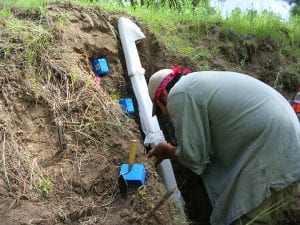Culture and anthropogenic fire regimes

Co-author and White Mountain Apache tribal member, Nick Laluk working on a stratigraphic profile in the Forestdale Valley on the White Mountain Apache reservation.
Paleofire scientists often focus on human population size or density to the exclusion of other human variables in the study of human influences on past fire regimes. Here, with colleagues from University of California, Berkeley, White Mountain Apache Tribe, and the University of Arizona, we show that human-influenced fire regimes varied with different cultures of the residents of the eastern Mogollon Rim region of central Arizona. For centuries during Ancestral Pueblo and Apache land use, anthropogenic burning increased burned areas primarily to support agriculture. For centuries under Western Apache land-use, fires were frequent enough to substantially change fuel loads to support hunting, foraging, and pasturage for domesticated livestock.
You can read more in the open access paper in Quaternary Research below.
Roos, Christopher I., Nicholas C. Laluk, William T. Reitze, and Owen K. Davis
2023 Stratigraphic Evidence for Culturally Variable Indigenous Fire Regimes in Ponderosa Pine Forests of the Mogollon Rim Area, East-Central Arizona. Quaternary Research 113:69-86. [PDF] [LINK]
Comments are Disabled